Key takeaways:
- Personalization enhances follow-ups; mentioning shared interests or specific details can strengthen connections.
- Timeliness is critical; waiting an appropriate amount of time before following up can lead to more meaningful conversations.
- Using CRM tools and email automation can streamline the follow-up process while maintaining a personal touch.
- Measuring follow-up success through response rates and the quality of conversations helps refine networking strategies.
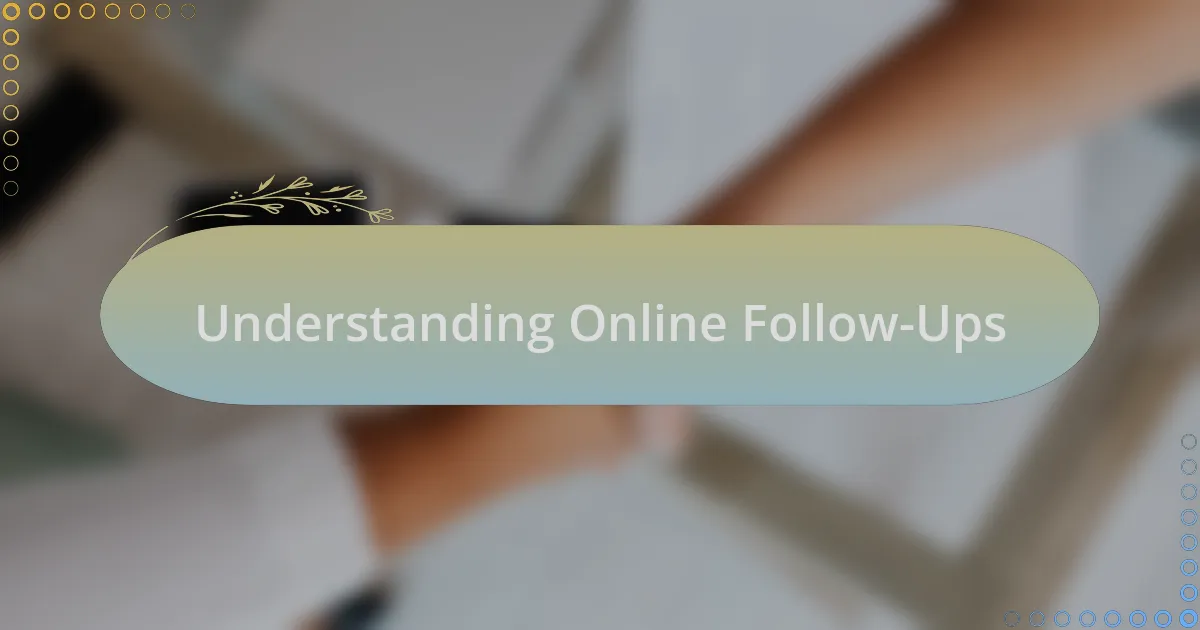
Understanding Online Follow-Ups
Online follow-ups are like the gentle nudge that keeps the conversation alive. I remember a time when I sent a follow-up email after a networking event, and the recipient replied not just to my message, but expressed appreciation for my initiative. It made me realize how powerful a simple follow-up can be in building rapport.
When I think about effective online follow-ups, I often wonder: what truly makes a message resonate? It’s about timing, tone, and content. I’ve found that personalizing my messages to reflect something specific from our previous interactions can make all the difference. For instance, mentioning a topic we discussed or a shared interest helps the recipient remember who I am, and it strengthens our connection.
Consistency is key in online follow-ups. Early in my career, I made the mistake of following up sporadically, which felt disjointed. Now, I aim for a rhythm—whether it’s weekly or bi-weekly emails—creating a sense of expectation and engagement. I believe this method not only keeps my connections warm but also shows my commitment to nurturing those relationships over time.
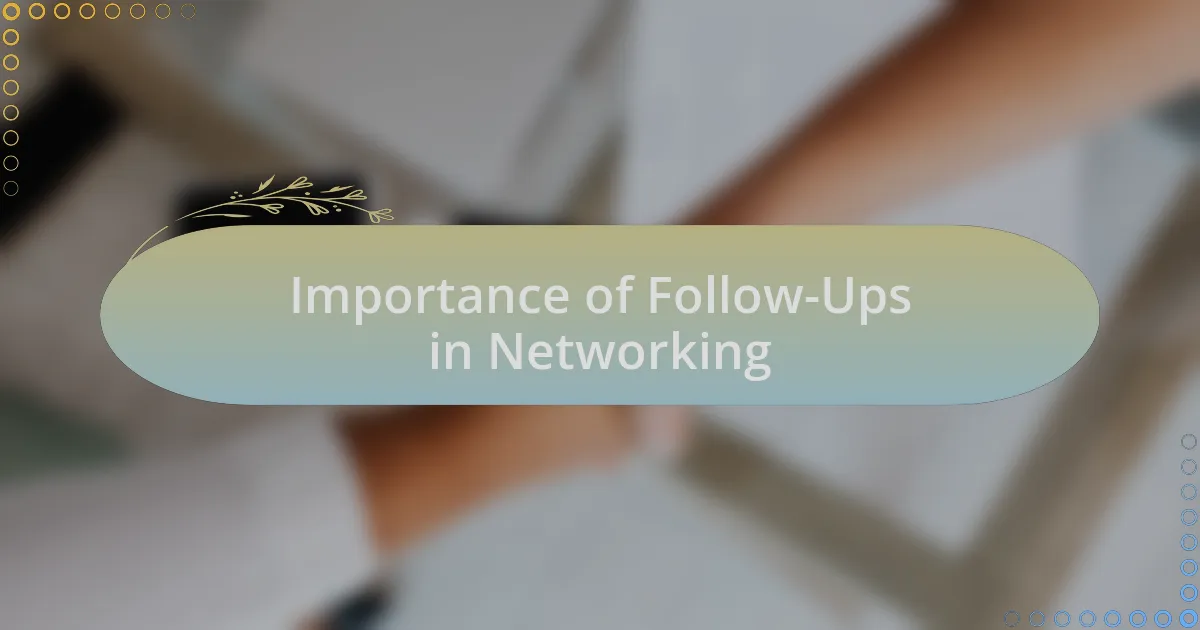
Importance of Follow-Ups in Networking
Follow-ups are essential in networking because they demonstrate genuine interest and commitment. I can’t count how many times I’ve received a follow-up that not only reminded me of our conversation but also stirred excitement for future collaboration. It’s fascinating to see how a brief message can rekindle a connection, reminding both parties of the potential that lies ahead.
The energy of a well-timed follow-up is palpable. Once, after meeting a business owner at a local event, I sent a quick note the next day expressing my enthusiasm about their project. To my surprise, they responded almost immediately, sharing their latest updates and asking for my input. This exchange reinforced my belief in the importance of follow-ups; they act as a bridge that transforms initial meetings into meaningful relationships.
Moreover, a thoughtful follow-up opens the door for deeper conversations. I often reflect on a time when I shared an article related to a topic we had discussed. Not only did it spark a continuing dialogue, but it also led to a small partnership that benefited us both. How often do we miss opportunities simply by not reinforcing those connections? A simple message can be the difference between a fleeting encounter and a lasting professional relationship.
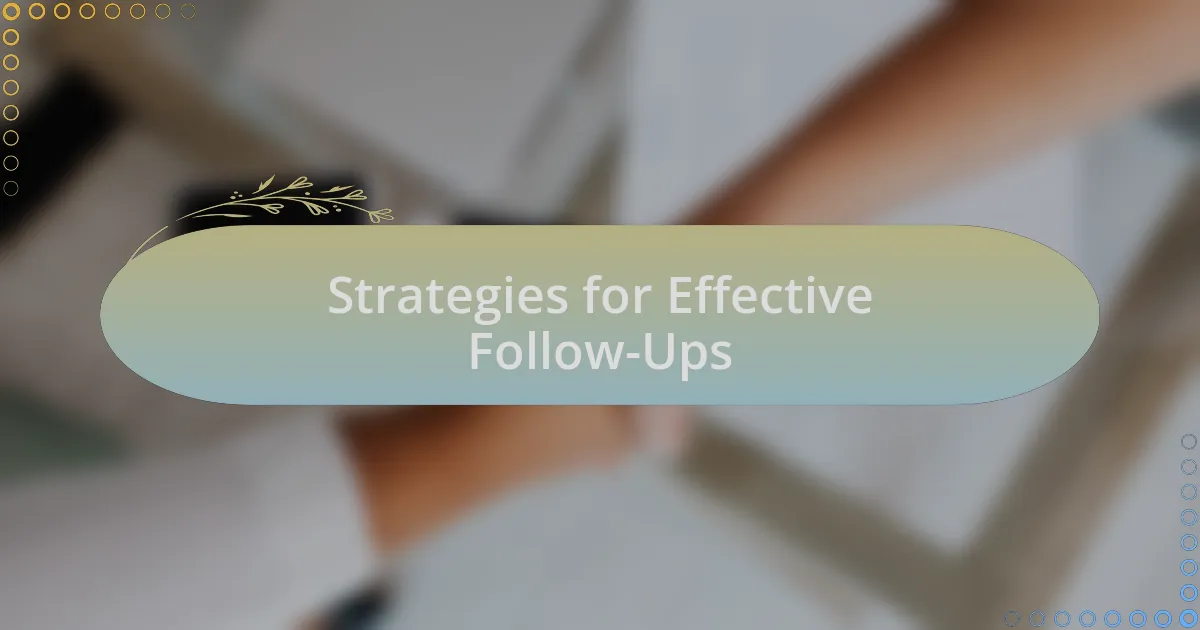
Strategies for Effective Follow-Ups
The key to effective follow-ups lies in personalization. I remember a time when I attended a local seminar and met someone who shared my interests. A few days later, I sent a follow-up email mentioning a specific point they made and asked their opinion on a related topic. The response was heartening— they appreciated the genuine engagement and we ended up discussing potential collaborations. Isn’t it intriguing how personal touches can transform a basic follow-up into a meaningful exchange?
Timing is also crucial. I’ve found that following up too soon can feel pushy, while waiting too long may cause the initial enthusiasm to fade. After meeting a new contact at a networking event, I waited about a week to reach out. This gave them the space to reflect on our conversation, which resulted in a more engaged response. Have you ever noticed how timing can either enhance or diminish the effectiveness of a message?
Lastly, clarity in your follow-up is vital. I once received a response that, while friendly, left me confused about the next steps. To avoid this, I always try to include clear calls to action in my messages. Whether it’s suggesting another meeting or asking for feedback on an idea, I aim to provide a pathway for ongoing conversation. How often have you received an ambiguous follow-up that left you uncertain about the connection? Clarity can turn those moments of hesitation into decisive action.
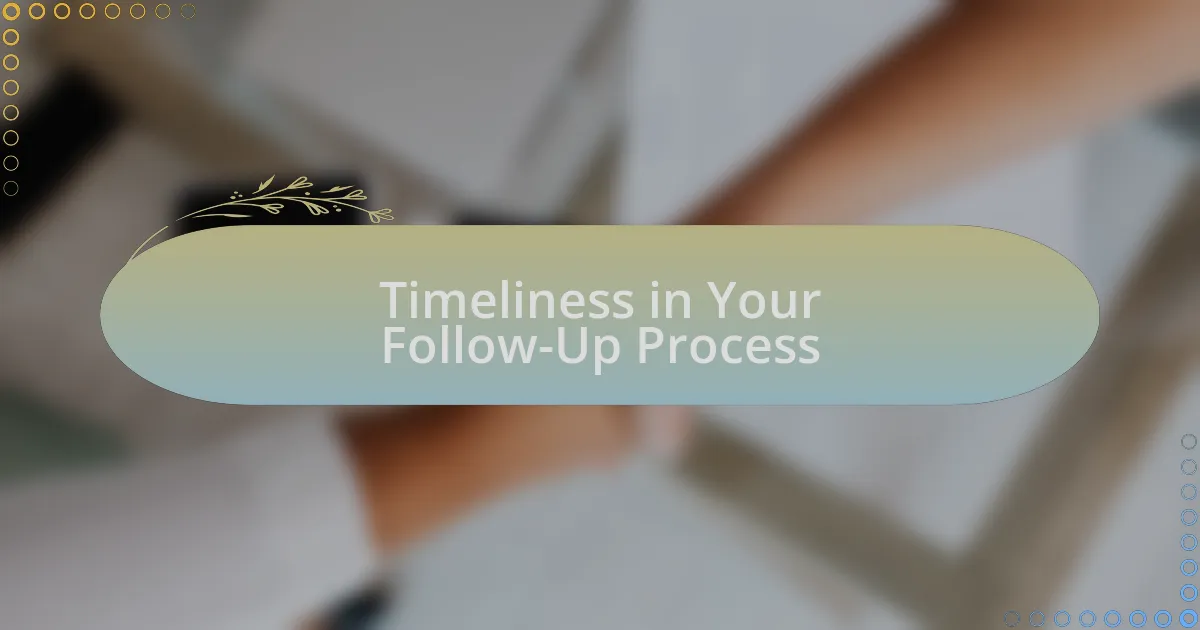
Timeliness in Your Follow-Up Process
Timeliness is the heartbeat of any follow-up. I recall an instance when I reached out to a connection just a day after our initial meeting. While I was eager to strike up the conversation, I quickly realized that they were probably still processing the event. It taught me a valuable lesson: give your contact a moment to breathe. How often do we rush things when a little patience can yield better results?
There’s a sweet spot for timing that I’ve come to appreciate. Waiting a week or two has often led to more meaningful dialogues. For example, I once followed up with a potential collaboration partner after ten days. Their response revealed they had taken the time to consider our discussion deeply, and it felt more like a rekindling of interest rather than just a casual check-in. Have you ever felt that spark reignited after a perfectly timed message?
Every moment counts in networking, and thoughtful timing can showcase your respect for the other person’s time and priorities. I often reflect on past connections that faded simply due to poor timing. A follow-up too late can feel like an afterthought. What’s your experience with timing? Have you noticed how a well-timed message can open doors that might have otherwise remained shut?
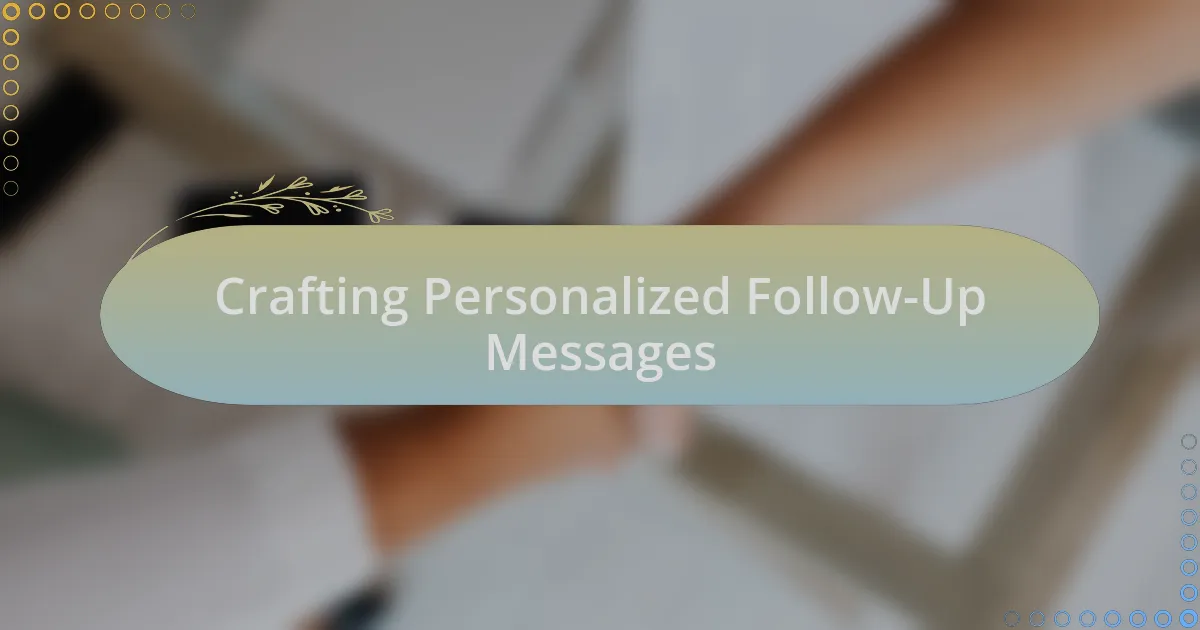
Crafting Personalized Follow-Up Messages
Crafting personalized follow-up messages can truly elevate your networking game. I remember sending a follow-up to someone I met at a conference, in which I referenced our shared enthusiasm for a particular speaker. It made the message stand out. Have you thought about how mentioning specific details can enhance the personal touch?
When I frame my messages, I aim for authenticity. For instance, I once included a personal note about a local nonprofit initiative the recipient was involved with. It wasn’t just about business; it showed that I was genuinely interested in their passions. This approach not only deepened our connection but sparked a fruitful conversation that went beyond our original intent. Wouldn’t you agree that people appreciate being seen as more than just a name on a list?
Emotional resonance is key in crafting these messages. A warm tone can transform a simple follow-up into a heartfelt connection. I’ve noticed that when I share a brief story about my journey or a challenge I faced, it invites a more open dialogue. This personal element encourages my contacts to respond in kind, fostering a sense of community. What stories have you shared that opened up your networking conversations?
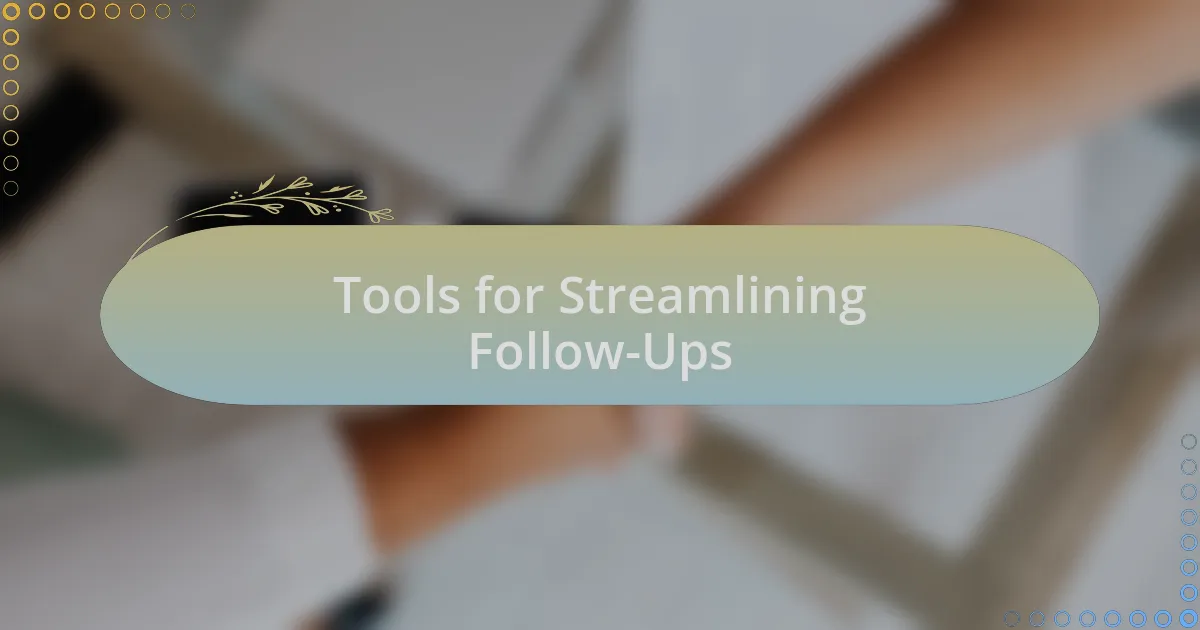
Tools for Streamlining Follow-Ups
When it comes to streamlining follow-ups, utilizing Customer Relationship Management (CRM) tools can be a game changer. I recall starting to use a simple CRM that allowed me to track my interactions with contacts. It gave me reminders for follow-ups, and I found that this consistency dramatically increased my response rates. Have you ever felt overwhelmed trying to remember who to follow up with next?
Another tool I’ve come to love is email automation software. I was initially skeptical about automating my messages, thinking it might feel impersonal. Yet, I discovered that with thoughtful templates, I could maintain the personal touch while saving time. For example, I crafted several email templates that I could customize based on the context of our last conversation. This flexibility helped me stay on top of my follow-ups while ensuring my recipients felt valued and remembered.
Moreover, scheduling tools like Calendly have made reconnecting much easier. I remember how challenging it was to find a time that worked for both me and my contacts. With a scheduling link, my connections can choose a time that fits their schedule, eliminating back-and-forth emails. Don’t you find that having a straightforward way to book meetings with people enhances your networking experience?
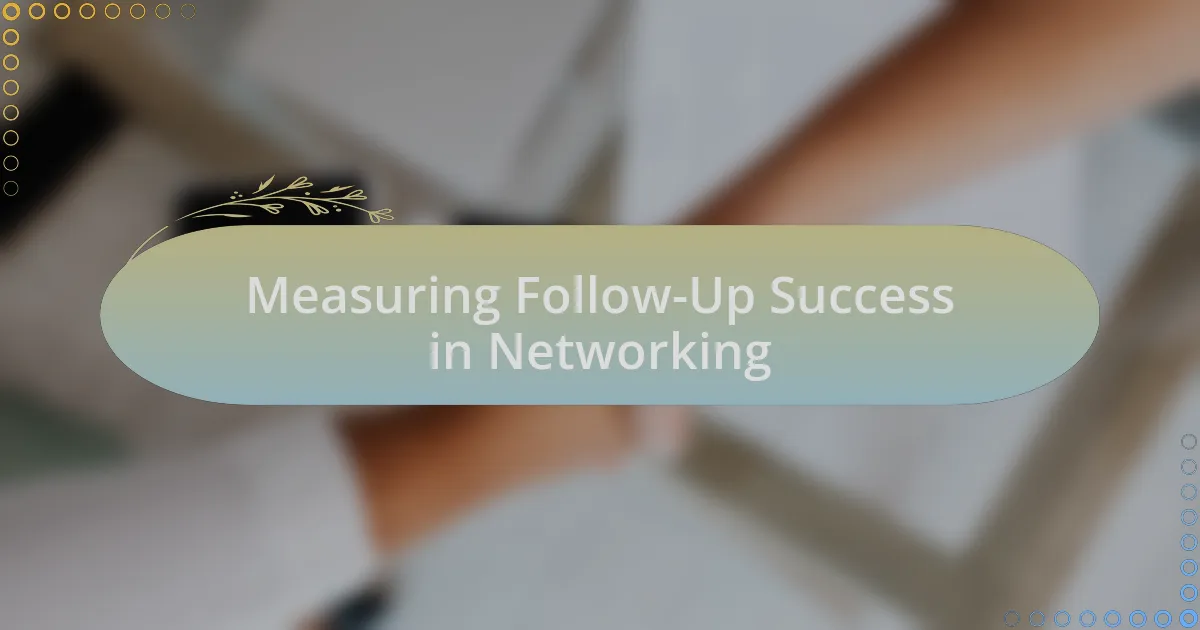
Measuring Follow-Up Success in Networking
Measuring the success of your follow-ups in networking can be quite revealing. I often assess my follow-up effectiveness by looking at response rates and engagement levels. When I implemented a simple tracking system for my follow-up emails, I was surprised to find that a personalized subject line significantly boosted my open rates. Have you ever analyzed what specific elements led to better responses?
Another metric I rely on is the quality of the conversations I have after reaching out. For instance, I track whether I transition from a follow-up to scheduling a meeting or even a collaborative project. There was a time when I thought quantity mattered most, but I realized that meaningful connections are what genuinely count. What about you—what do you prioritize when it comes to the outcomes of your follow-ups?
Feedback from recipients is also a critical indicator of success. After one particularly effective follow-up, a contact expressed appreciation for my message’s relevance. That feedback not only reinforced my approach but also made me feel validated in my efforts. It’s a simple reminder that behind every email, there’s a real person, and those interactions can spark ongoing relationships that yield great opportunities.